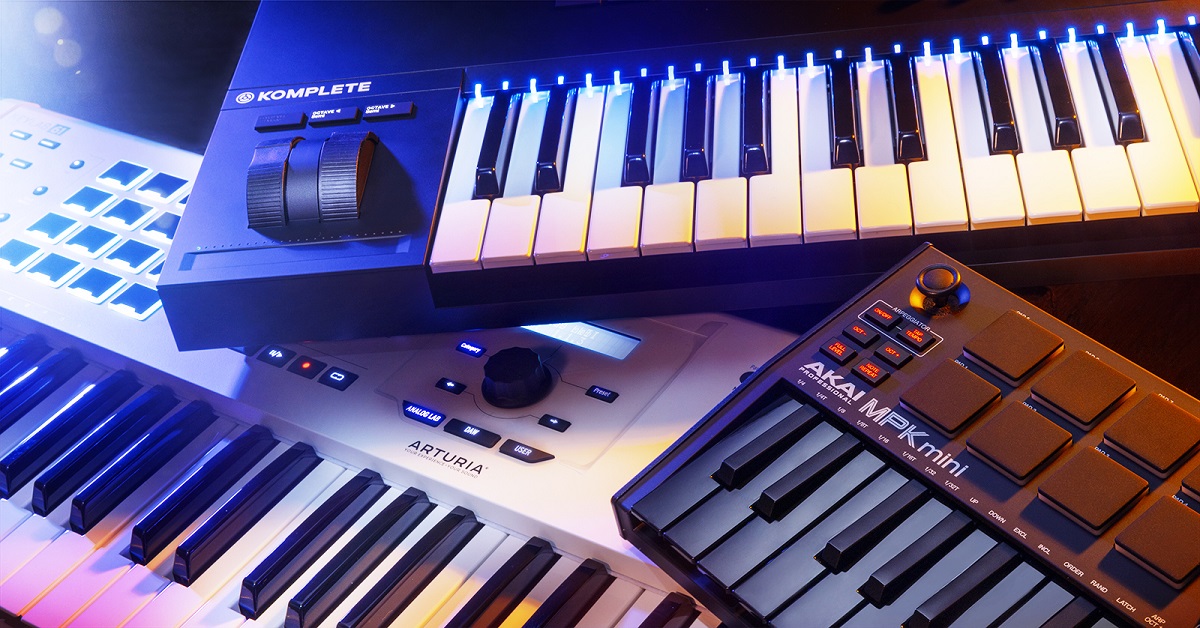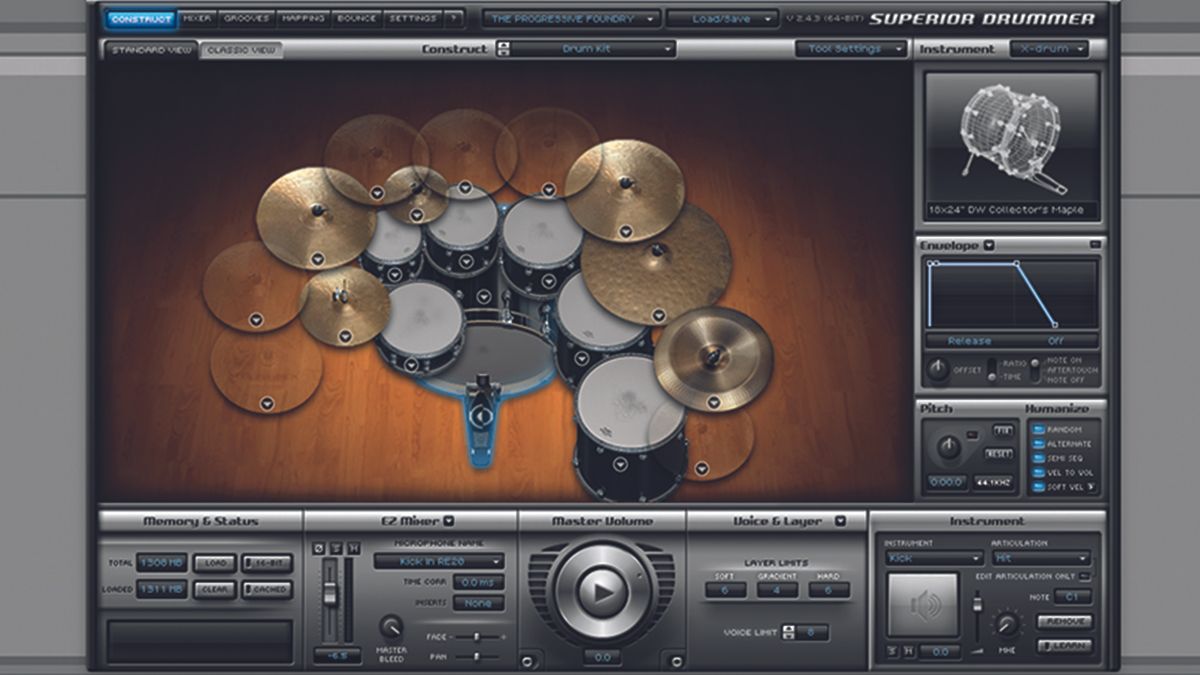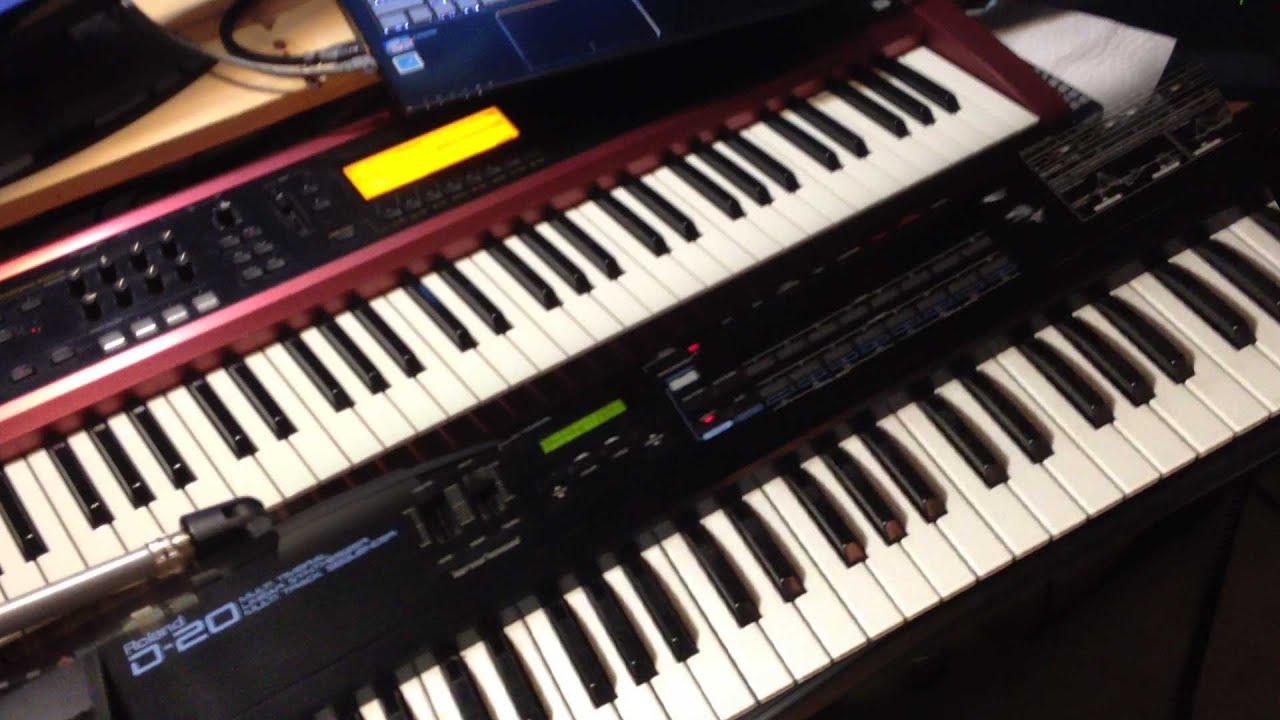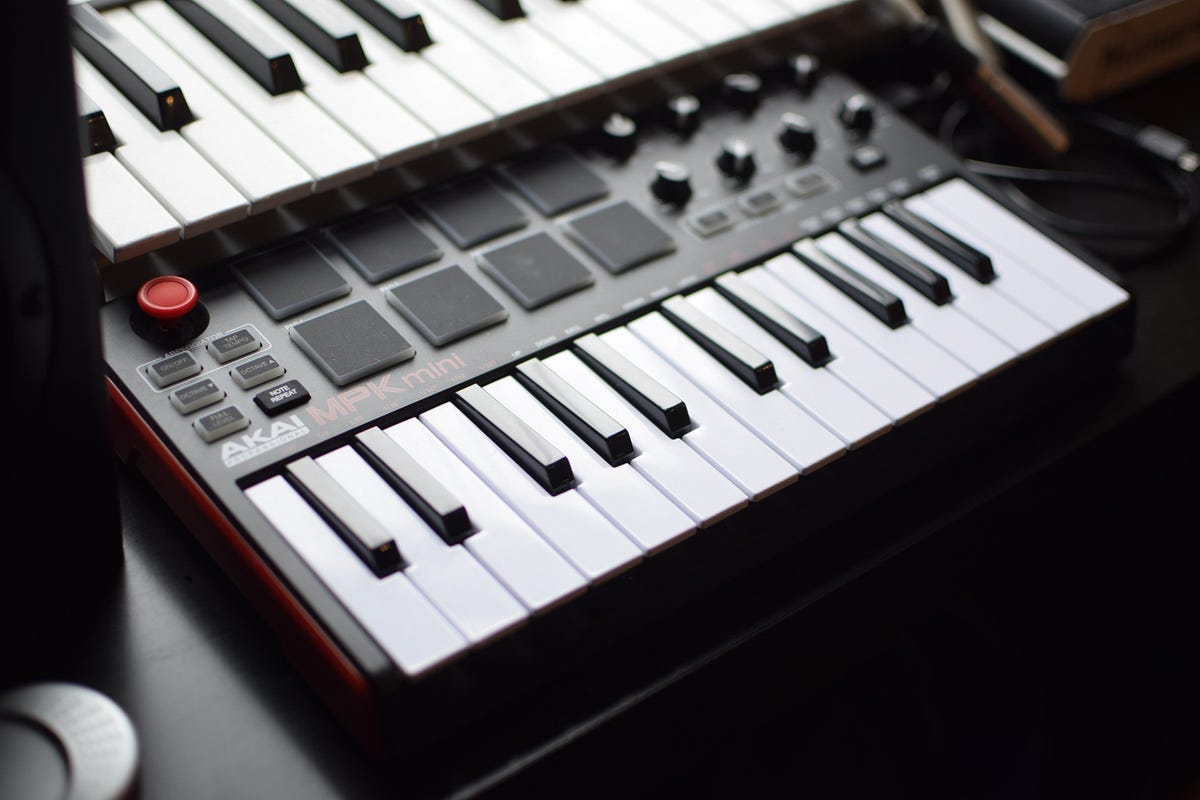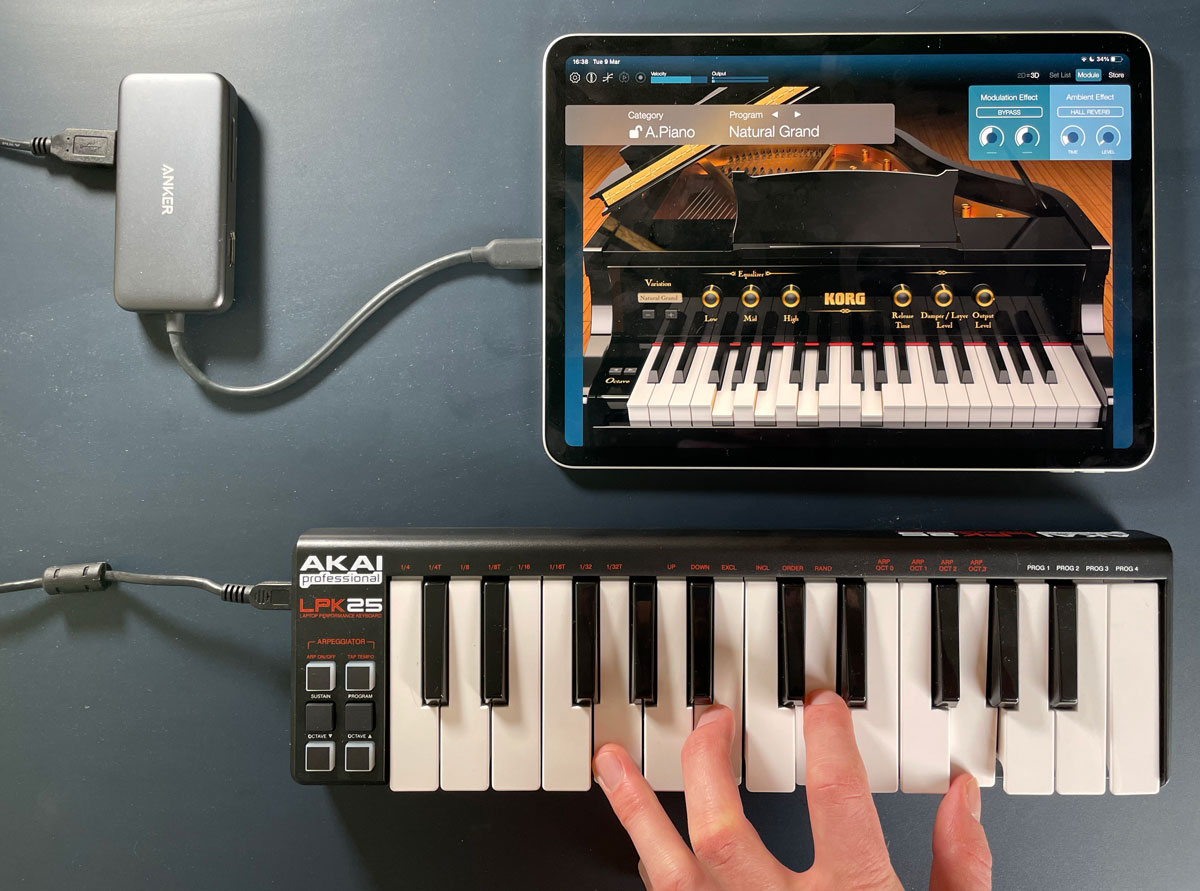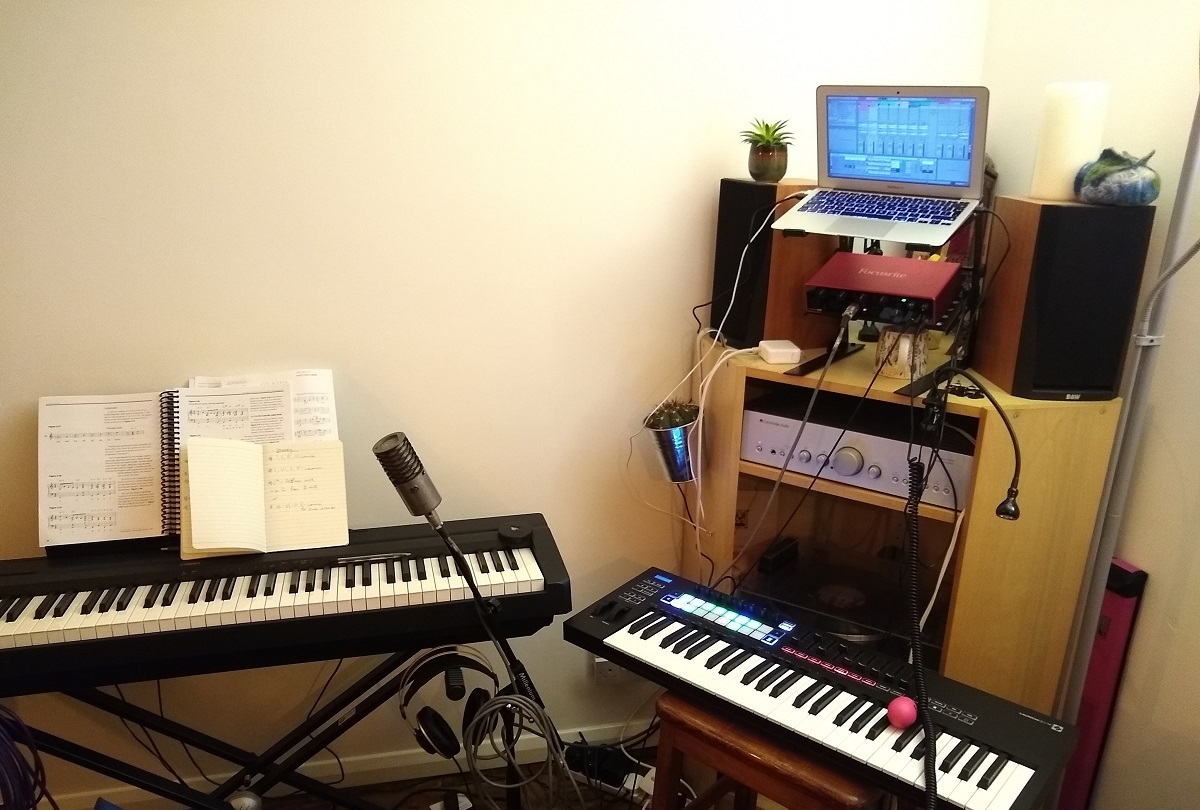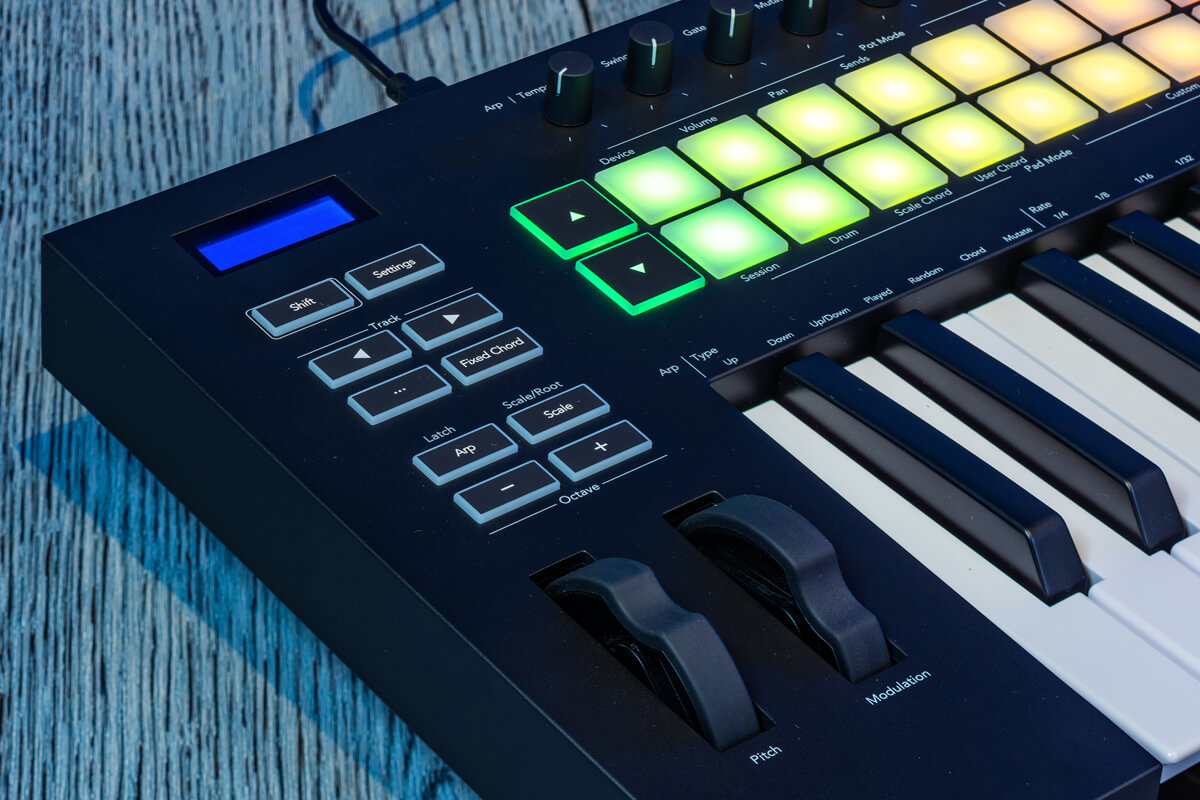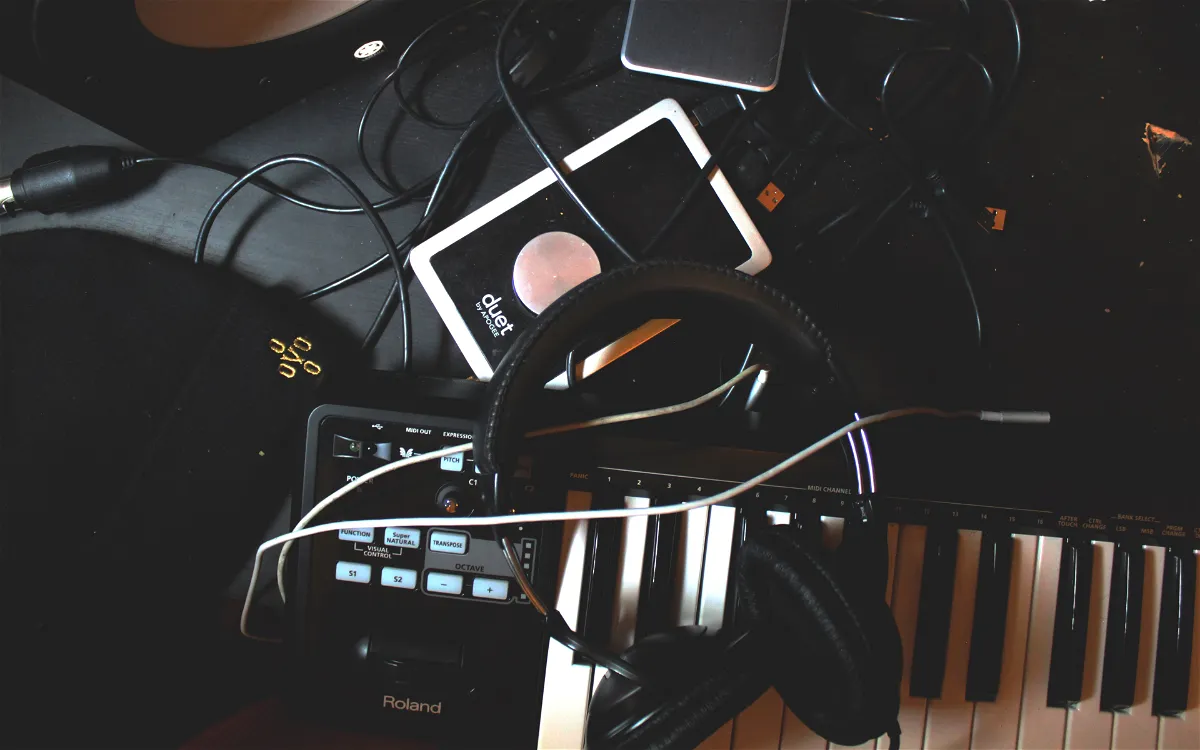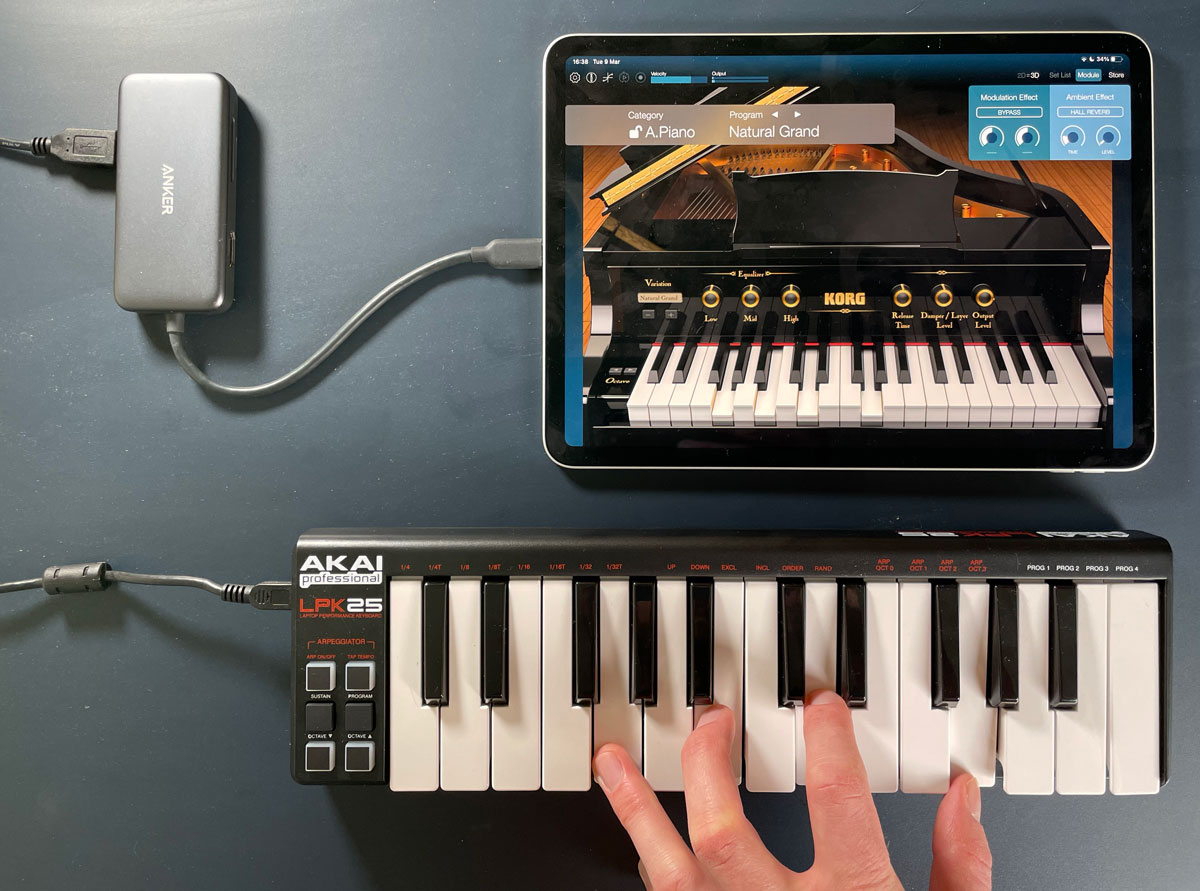Introduction
Setting up a MIDI keyboard with custom sounds can unlock a world of creative possibilities for musicians and producers. Whether you're a seasoned professional or an aspiring enthusiast, customizing your MIDI keyboard with unique sounds tailored to your style can elevate your music to new heights. By following a few simple steps, you can seamlessly integrate personalized sounds into your workflow, allowing for unparalleled expression and musical innovation.
In this guide, we will explore the process of setting up a MIDI keyboard with custom sounds, from selecting the right MIDI keyboard to installing the necessary software and loading custom sounds onto the device. Additionally, we will cover testing and troubleshooting to ensure a smooth and successful setup.
Customizing your MIDI keyboard with unique sounds not only adds a personal touch to your music but also enables you to explore a diverse range of tones and textures, enhancing your creative output. Whether you're a live performer looking to expand your sonic palette or a studio producer seeking to craft signature sounds, the ability to integrate custom sounds into your MIDI keyboard empowers you to shape your musical identity.
As we delve into the intricacies of this process, it's essential to approach it with a sense of curiosity and experimentation. Embracing the journey of customizing your MIDI keyboard with unique sounds allows for the discovery of new sonic landscapes and the development of a distinctive musical voice. With the right tools and a creative mindset, you can transform your MIDI keyboard into a personalized instrument that reflects your artistic vision.
Join us as we embark on this exciting endeavor, where technology meets creativity, and explore the boundless potential of setting up a MIDI keyboard with custom sounds. Let's dive into the world of musical customization and unleash the full potential of your MIDI keyboard.
Choosing the Right MIDI Keyboard
When embarking on the journey of setting up a MIDI keyboard with custom sounds, selecting the appropriate MIDI keyboard is a crucial first step. The market offers a wide array of MIDI keyboards with varying features, sizes, and functionalities, catering to the diverse needs of musicians and producers. To make an informed decision, consider the following factors to ensure that the chosen MIDI keyboard aligns with your specific requirements.
- Key Count: The number of keys on a MIDI keyboard can significantly impact your playing experience. While compact MIDI keyboards with 25 keys are portable and suitable for on-the-go music production, a full-sized 88-key MIDI keyboard provides a piano-like feel and extended range for expressive performances. Consider your playing style and space constraints when determining the ideal key count for your MIDI keyboard.
- Key Action: The type of key action, such as semi-weighted, fully weighted, or synth-action, influences the responsiveness and tactile feel of the keys. For pianists seeking a realistic piano playing experience, fully weighted keys mimic the feel of an acoustic piano, while synth-action keys offer a lightweight and springy response suitable for electronic music production.
- Controls and Pads: Many MIDI keyboards feature assignable knobs, faders, and pads that facilitate hands-on control of software parameters and trigger drum beats or samples. Evaluate the availability and functionality of these controls based on your preferred music production workflow, whether it involves extensive parameter tweaking or live performance.
- Aftertouch and Velocity Sensitivity: Aftertouch and velocity sensitivity enhance the expressiveness of MIDI keyboard performances by allowing nuanced control over dynamics and modulation. These features enable musicians to infuse their playing with subtle variations in volume, timbre, and articulation, adding depth and emotion to their music.
- Integration with DAWs and Software: Compatibility with digital audio workstations (DAWs) and music production software is essential for seamless integration into your existing setup. Ensure that the MIDI keyboard is compatible with your preferred software and supports essential MIDI protocols to enable effortless communication between the keyboard and your digital tools.
By carefully considering these factors, you can narrow down the options and identify a MIDI keyboard that suits your playing style, production requirements, and musical aspirations. The chosen MIDI keyboard will serve as the canvas for integrating custom sounds and shaping your sonic identity, laying the foundation for a personalized and inspiring music-making experience.
Installing the Necessary Software
Once you’ve chosen the right MIDI keyboard, the next step in the process of setting up custom sounds involves installing the essential software to facilitate seamless communication between your MIDI keyboard and your computer or music production setup. The software requirements may vary based on your specific MIDI keyboard model and the custom sounds you intend to use. Here’s a comprehensive guide to installing the necessary software for integrating custom sounds into your MIDI keyboard:
- Driver Installation: Start by checking if your MIDI keyboard requires specific drivers to function with your computer. Manufacturers often provide downloadable drivers on their official websites. Ensure that you install the latest drivers compatible with your operating system to enable proper communication between the MIDI keyboard and your computer.
- DAW Integration: If you use a digital audio workstation (DAW) for music production, ensure that your MIDI keyboard is seamlessly integrated with your preferred DAW. Most modern DAWs support MIDI devices and offer straightforward setup procedures to enable MIDI input and output. Follow the instructions provided by your DAW’s documentation to configure the MIDI keyboard within the software environment.
- MIDI Mapping Software: In some cases, custom sounds may require specific MIDI mappings to optimize their functionality with your MIDI keyboard. Utilize MIDI mapping software to assign custom sound parameters to the MIDI keyboard’s controls, allowing for intuitive manipulation and performance. Familiarize yourself with the MIDI mapping process to effectively tailor the MIDI keyboard to accommodate your custom sounds.
- Sound Library Management: If you’re utilizing a diverse array of custom sounds, consider employing sound library management software to organize and access your sound libraries efficiently. These tools enable you to categorize, search, and load custom sounds onto your MIDI keyboard with ease, streamlining the creative process and enhancing workflow efficiency.
By meticulously installing the necessary software tailored to your MIDI keyboard and custom sound requirements, you establish a cohesive and optimized environment for integrating personalized sounds into your music production workflow. This integration not only enhances the functionality of your MIDI keyboard but also empowers you to explore new sonic territories and unleash your creative potential.
Loading Custom Sounds onto the MIDI Keyboard
With the MIDI keyboard and essential software in place, the next pivotal phase in the customization process involves loading custom sounds onto the device. This step allows you to infuse your MIDI keyboard with a personalized sonic identity, unlocking a myriad of creative possibilities. Whether you’ve crafted your own sounds, obtained sound libraries, or downloaded custom patches, the process of integrating these sounds into your MIDI keyboard is essential for shaping your musical expression.
Here’s a comprehensive guide to loading custom sounds onto your MIDI keyboard:
- Sound File Compatibility: Ensure that the custom sounds you intend to load onto your MIDI keyboard are compatible with the device. Different MIDI keyboards support various sound file formats, such as WAV, AIFF, or specific proprietary formats. Verify the supported file types and specifications outlined in the MIDI keyboard’s documentation to guarantee seamless integration of custom sounds.
- Sound Transfer Method: Depending on your MIDI keyboard model, the method of transferring custom sounds may vary. Some MIDI keyboards allow direct USB transfer, enabling you to drag and drop sound files from your computer to the MIDI keyboard’s internal memory or storage. Alternatively, certain keyboards utilize dedicated software for sound transfer, requiring you to follow specific procedures outlined by the manufacturer.
- Organizing Sound Banks: To streamline access to custom sounds during performances or studio sessions, consider organizing the loaded sounds into distinct sound banks or categories. This organization facilitates quick navigation and selection of sounds, enhancing your workflow efficiency and enabling seamless transitions between different sonic textures.
- Parameter Mapping: If your custom sounds feature intricate parameters, such as modulation assignments, effects settings, or performance controls, ensure that these parameters are appropriately mapped to the MIDI keyboard’s controls. Utilize MIDI mapping capabilities within your MIDI keyboard or software to assign and adjust parameters, allowing for intuitive manipulation and expressive performance of custom sounds.
By methodically loading custom sounds onto your MIDI keyboard, you imbue the instrument with a personalized sonic palette, reflective of your artistic vision and musical style. This customization not only enhances the versatility of your MIDI keyboard but also empowers you to craft unique compositions and performances that resonate with your creative essence.
Testing and Troubleshooting
Upon completing the setup and customization of your MIDI keyboard with custom sounds, thorough testing is essential to ensure the seamless integration and functionality of the loaded sounds. Additionally, being equipped with troubleshooting techniques allows you to address any potential issues that may arise during the testing phase. By conducting rigorous testing and troubleshooting, you can optimize the performance of your MIDI keyboard and custom sounds, fostering a reliable and inspiring music-making experience.
Here’s a comprehensive approach to testing and troubleshooting your MIDI keyboard with custom sounds:
- Sound Playback: Begin by testing the playback of custom sounds across the entire range of the MIDI keyboard. Verify that each key triggers the intended sound and that the velocity sensitivity and aftertouch, if applicable, respond accurately to your playing dynamics. This comprehensive evaluation ensures that the loaded custom sounds align seamlessly with the MIDI keyboard’s performance capabilities.
- Parameter Adjustment: Explore the parameter adjustments and controls associated with the custom sounds to assess their responsiveness and functionality. Verify that any mapped parameters, such as modulation, pitch bend, and effects, behave as intended when manipulated via the MIDI keyboard’s controls. This step ensures that the custom sounds can be effectively shaped and modulated during performances and studio productions.
- Integration with DAW: If you utilize a digital audio workstation (DAW) in conjunction with your MIDI keyboard, test the integration of custom sounds within the DAW environment. Confirm that MIDI input and output are seamlessly routed, allowing for the recording, playback, and manipulation of custom sounds within your preferred software. This validation ensures that the MIDI keyboard functions harmoniously with your primary music production tools.
- Troubleshooting Techniques: In the event of any unexpected behavior or issues encountered during testing, familiarize yourself with troubleshooting techniques specific to your MIDI keyboard and custom sounds. Consult the manufacturer’s documentation, online forums, and support resources to identify and address potential challenges, such as sound latency, mapping discrepancies, or software conflicts. By proactively troubleshooting, you can swiftly resolve any impediments to the optimal performance of your MIDI keyboard with custom sounds.
By diligently conducting comprehensive testing and equipping yourself with troubleshooting strategies, you can fine-tune the integration of custom sounds into your MIDI keyboard, ensuring a reliable and expressive musical instrument. This meticulous approach fosters confidence in the performance and functionality of your MIDI keyboard, empowering you to unleash your creativity with the assurance of a seamlessly customized musical tool.
Conclusion
Embarking on the journey of setting up a MIDI keyboard with custom sounds is a transformative process that empowers musicians and producers to sculpt their sonic identity and elevate their creative endeavors. By carefully selecting the right MIDI keyboard, installing essential software, loading custom sounds, and conducting thorough testing, individuals can seamlessly integrate personalized sounds into their music production workflow, unlocking a world of expressive possibilities.
Customizing a MIDI keyboard with unique sounds transcends the realm of technical setup and delves into the realm of artistic expression. It enables musicians to infuse their performances and compositions with a distinct sonic character, reflective of their creative vision and musical personality. The integration of custom sounds into a MIDI keyboard not only enhances the instrument’s versatility but also fosters a deeper connection between the musician and their musical tool, ultimately amplifying the emotive impact of their artistry.
As technology continues to intersect with musical innovation, the process of setting up a MIDI keyboard with custom sounds embodies the harmonious convergence of creativity and technical proficiency. It encourages musicians to explore new sonic landscapes, experiment with unconventional textures, and push the boundaries of conventional music production, fostering a culture of sonic exploration and artistic individuality.
Through the meticulous customization of a MIDI keyboard with custom sounds, musicians and producers embark on a continual journey of sonic discovery and self-expression. This journey transcends the confines of traditional musical instruments, empowering individuals to craft immersive sonic experiences that resonate with audiences and fellow creators alike.
In essence, the process of setting up a MIDI keyboard with custom sounds is not merely a technical endeavor; it is a voyage of musical self-discovery and innovation, where technology serves as a conduit for boundless creativity. As musicians embrace this journey with open minds and adventurous spirits, they embark on a path of perpetual evolution and artistic evolution, harnessing the power of customized sounds to shape the future of music.







